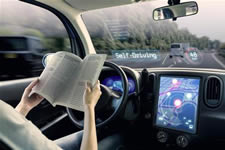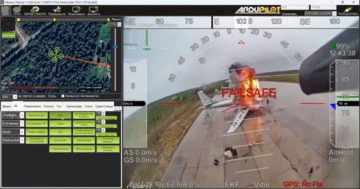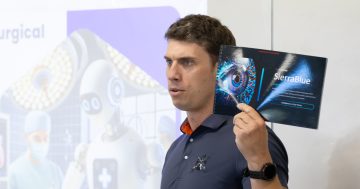By Dara Kerr.
 Sunday, 18 March marked a turning point for self-driving cars.
Sunday, 18 March marked a turning point for self-driving cars.
For the first time, a car in full autonomous mode struck and killed a pedestrian.
It happened at 10 pm in Tempe, Arizona, where ride-hailing company Uber had been picking up passengers in autonomous vehicles for more than a year.
Elaine Herzberg, 49, was walking her bicycle down a four-lane road and was starting to cross when the grey Volvo, operated by Uber, hit her at about 40 m/h (about 65 km/h), according to local police.
She was pronounced dead by the time she reached the hospital.
Although the car was driving itself, Uber vehicle operator Rafaela Vasquez, 44, was behind the wheel.
“Our investigation did not show at this time that there were significant signs of the vehicle slowing down,” Tempe Police Sgt Roland Elcock said in a press conference on 19 March.
The police are “going to attempt to find who was at fault and how we can better be safe,” he added.
Almost every automaker in the world — including General Motors, BMW, Ford, TeslaMotors and Toyota — has plans to offer self-driving cars in the next few years.
Several Silicon Valley giants such as Intel and Google have invested years in developing the technologies as well.
The promise: greater safety, since such vehicles use software and sensors that let them “see” and react to their surroundings supposedly faster than humans can.
For the most part, testing of the technology has shown the cars to be safe.
But autonomous technology is still a work in progress.
The majority of car tests haven’t been done on public roads, and the cars are still learning how to drive.
The Tempe fatality has some people questioning if the cars belong on public roads at all.
“This is their vehicle, they put it on the road, and they’re responsible for making sure it’s safe,” said consumer attorney Neama Rahmani, who isn’t involved with any of the legal proceedings regarding the accident.
“Uber needs to not implement any of this until it’s fully vetted and tested and 100 per cent safe.”
Safety first
This wasn’t the first time a self-driving car has been involved in a collision.
Google reported an accident with one of its cars in March 2016, and there have been at least three crashes involving Teslas in autopilot mode, one of which was fatal — though Tesla warns owners that autopilot isn’t fully autonomous.
One of Uber’s vehicles was involved in another crash in Tempe last year, but no serious injuries were reported.
And a fortnight ago, an Uber self-driving car in Pittsburgh was in a collision with another car.
Uber’s cars have also had some other near misses in Pittsburgh.
Within hours of Uber launching its autonomous vehicles in San Francisco in December 2016, one ran a red light.
“Sadly, this is a reminder of the risk that comes with rushing to get more and more self-driving cars on public roads before we know they are safe,” said David Friedman, director of cars for Consumers Union, which is the advocacy division of Consumer Reports.
“The promise of self-driving cars is that they can avoid fatalities, but this tragedy makes clear they have a long way to go.”
What now?
After the Tempe fatality, some regulators are starting to question whether driverless cars are ready for public roads.
Both the US National Transportation Safety Board (NTSB) and the US Department of Transportation’s National Highway Traffic Safety Administration (NHTSA) confirmed they’ve sent teams to Tempe to investigate the collision.
“The investigation will address the vehicle’s interaction with the environment, other vehicles and vulnerable road users such as pedestrians and bicyclists,” the NTSB said.
The NHTSA said that, along with dispatching its Special Crash Investigation team, it’s also in contact with Uber and Volvo, and with Federal, State and local authorities, about the incident.
Tempe police said that both Uber and its driver are cooperating fully with the investigation, which is still in its beginning stages.
Uber’s vehicle was equipped with video cameras that show the accident from several angles, including outside the vehicle and the actions of the person in the driver’s seat, according to the police.
This footage hasn’t been released to the public.
But Tempe Police Chief, Sylvia Moir did say the video showed Herzberg emerging from the shadows, according to the San Francisco Chronicle.
Uber, best known for its ride-hailing service, has temporarily halted its self-driving operations in all cities where it’s been testing its vehicles, including Tempe, Phoenix, Pittsburgh, San Francisco and Toronto.
Toyota has followed suit and also put a pause on its driverless car program on public roads because of the fatality, said a company spokesman.
* Dara Kerr is a senior reporter for CNET. She tweets at @darakerr.
This article first appeared at www.cnet.com.









